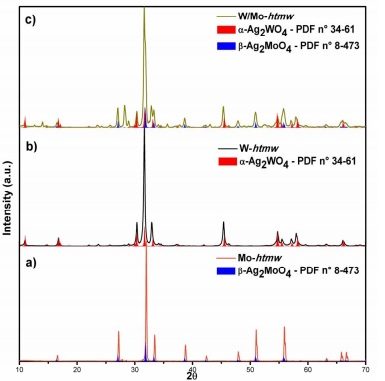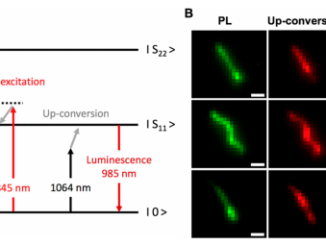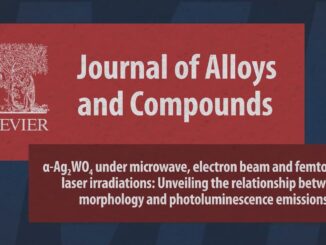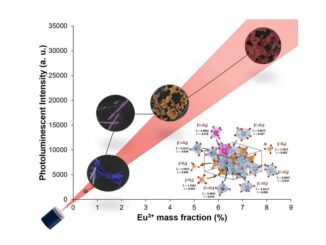
Silver Molybdate and Silver Tungstate Nanocomposites with Enhanced Photoluminescence
Abstract: Silver molybdate (Ag2MoO4) and silver tungstate (Ag2WO4) nanomaterials were prepared using two complementary methods, microwave assisted hydrothermal synthesis (MAH) (pH 7, 140 °C) and co-precipitation (pH 4, 70 °C), and were then used to prepare two core/shell composites, namely α-Ag2WO4/β-Ag2MoO4 (MAH, pH 4, 140 °C) and β-Ag2MoO4/β-Ag2WO4 (co-precipitation, pH 4, 70 °C). The shape and size of the microcrystals were observed by field emission scanning electron microscopy (FE-SEM), different morphologies such as balls and nanorods. These powders were characterized by X-ray powder diffraction and UV-vis (diffuse reflectance and photoluminescence). X-ray diffraction patterns showed that the Ag2MoO4 samples obtained by the two methods were single-phased and belonged to the β-Ag2MoO4 structure (spinel type). In contrast, the Ag2WO4 obtained in the two syntheses were structurally different: MAH exhibited the well-known tetrameric stable structure β-Ag2WO4, while co-precipitation afforded the metastable β-Ag2WO4 allotrope, coexisting with a weak amount of the α;-phase. The optical gap of β-Ag2WO4 (3.3 eV) was evaluated for the first time. In contrast to β-Ag2MoO4/β-Ag2WO4, the α-Ag2WO4/β-Ag2MoO4 exhibited strongly-enhanced photoluminescence in the low-energy band (650 nm), tentatively explained by the creation of a large density of local defects (distortions) at the core-shell interface, due to the presence of two different types of MOx polyhedra in the two structures.
Author(s): De Santana, Yuri V. B.; Cardoso Gomes, Jose Ernane; Matos, Leandro; et al.
Nanomaterials and Nanotechnology
Volume: 4 Published: 2014
DOI: https://doi.org/10.5772/58923
PDF: Silver Molybdate and Silver Tungstate Nanocomposites with Enhanced Photoluminescence




